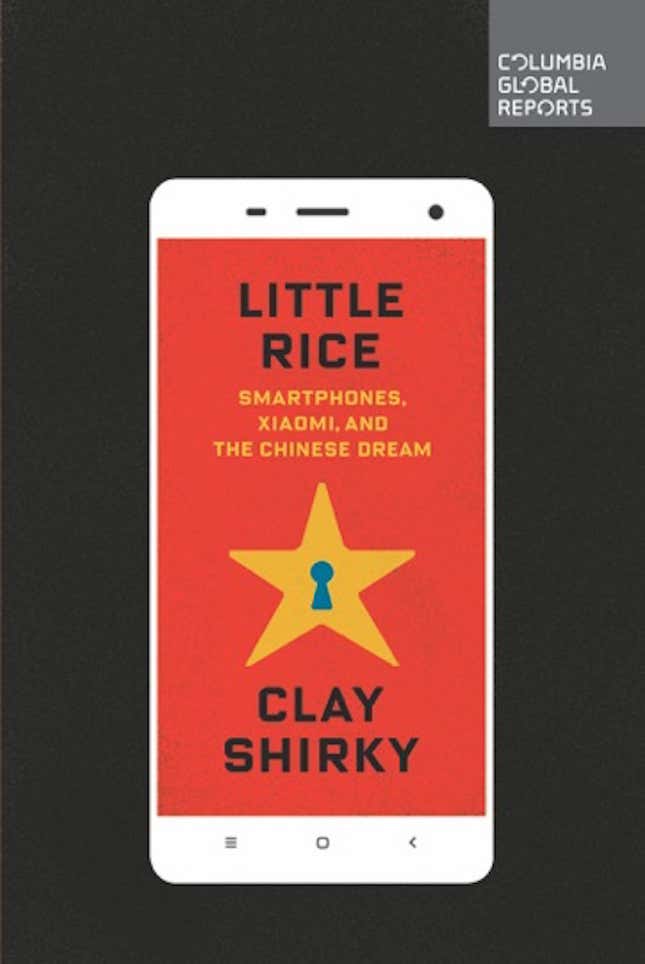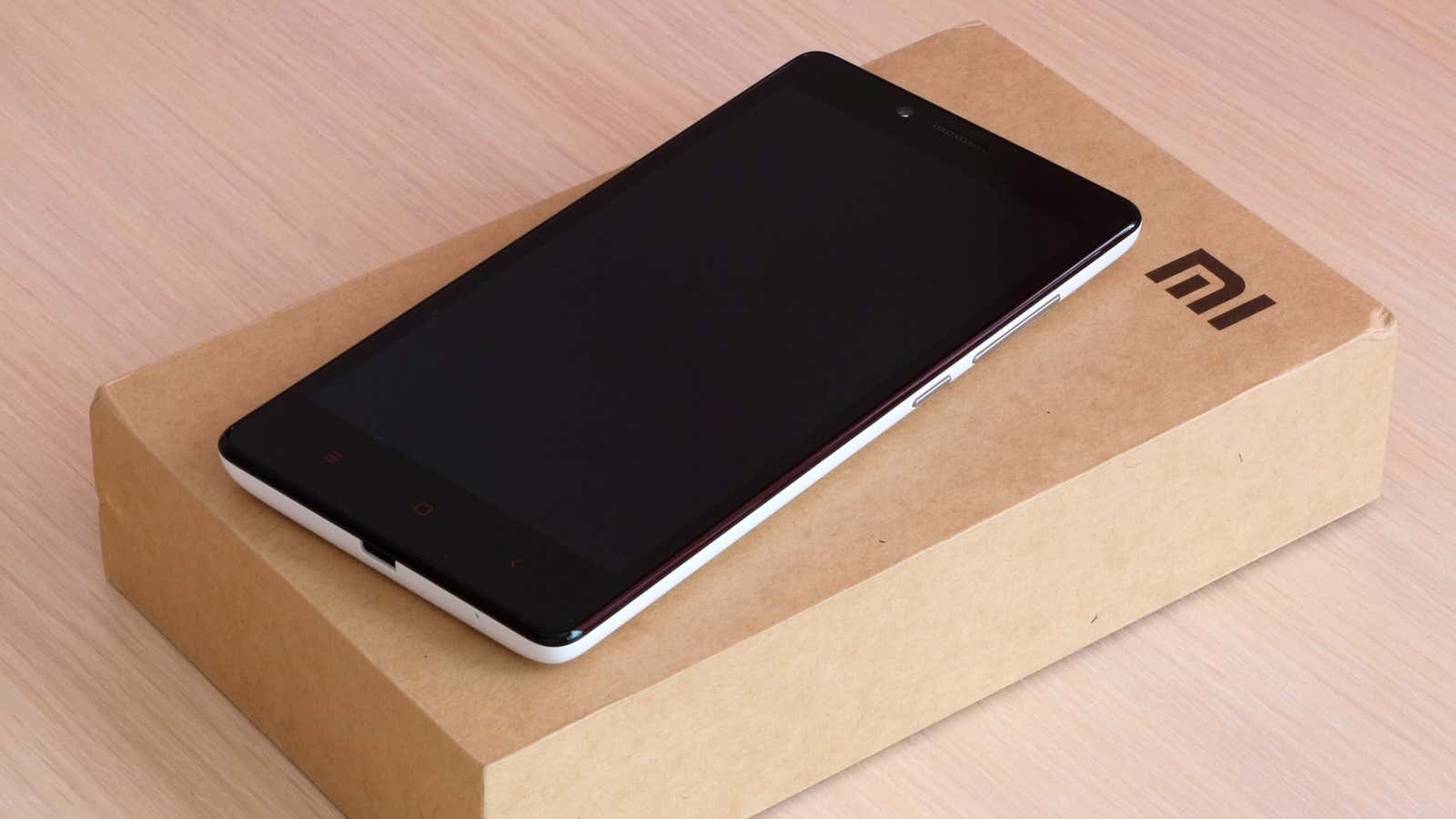In simple environments, people acquire new capabilities by acquiring new objects. In complex environments, people acquire new capabilities by using new services. And as anyone who’s busily added apps to their smartphone knows, the one problem apps are no good at solving is the problem of having too many apps. Environments with rising complexity always create business opportunities for third parties to step in and manage that complexity. One form of success in a complex environment is someone who consistently pays you to keep at bay the very complexity you cause. Achieving that state is Xiaomi’s long-term goal. As Xiaomi investor Richard Liu puts it, “We never care about number of phones sold. We care about number of users converted.” The company had effectively no profit in 2011, and an astonishingly low profit margin of 1.8% in 2013, plowing almost every yuan back into growth. (Having raised $1 billion at the end of 2014, the company is now set to start generating real profit.) This idea—head count matters more than revenues early on—is an old internet pattern, where business after business first scaled up and only then pursued revenues, a pattern followed by Yahoo, Google and Amazon.
Xiaomi has always been focused on maintaining that pattern even when it moved into hardware. Selling a Xiaomi phone generates some income, but more importantly, it becomes a way to distribute the MIUI interface. The user experiences MIUI as a way to operate her phone, but it is actually a bundle of potential new services. User engagement is Xiaomi’s founding logic. When they began, with a small group of employees and just enough cash to get them through early milestones, they began recruiting. This is the normal case, but for Xiaomi recruiting wasn’t just about new employees, they also began recruiting new users. This is one of many unusual things the company did—recruiting users of a product that doesn’t exist yet seems backwards. Yet those users, or at least potential users, were critical to the speed with which the company would be able to build MIUI, its core product.
Given that the firm was founded by some of the best technical minds in China, it’s easy to wonder what Xiaomi got out of these first users. What could they have access to that the people inside the firm didn’t know, given that they were building the software? The simplest answer is that the user had access to reality—every company builds a bubble around itself, where the products get built and tested in a more controlled environment than they get used in. This is especially true of complex software. What the early users enabled Xiaomi to see was how MIUI actually worked when real (albeit unusually technically proficient) people tried to install it on a wide variety of devices.
This pattern continues to this day. Xiaomi’s marketing chief Tony Wei says that new software sent to early testers will generate thousands of reports back overnight, and this openness in turn allows them to try out, test, and fix the critical source of their commercial advantage, a version of the operating system that lets them tie their own services to the user’s device. These are not mere bug reports, of the sort most software now generates automatically. These are user reviews, questions not just about the technical aspects of MIUI but about which features the user likes, dislikes, or wants to see in the future. (The fever users generate more technical feedback, the flood users more emotional feedback.) For a company dedicated to creating cheap products, it says quite a lot about their strategy that they run their own call centers; they consider that experience too important to outsource. The users generating these reports were essential to the company’s start, but unlike many internet firms, which build a product with early users and then displace them as the firm grows, Xiaomi has never forgotten the earliest users, in private or public. In March of 2015, when the company had 100 million users of MIUI, their understandably triumphal press release emphasized the work of the original hundred in the first paragraph.
They have managed to extend this sense of importance to their other users. As the number of MIUI users began to include non-geeks, Xiaomi began to behave in ways that would generate interest and loyalty in the general public. Their most famous technique is their flash sales, where a limited number of devices are sold at an announced time, and potential customers have to line up (online) for the right to try to purchase one of the devices. Flash sales generate the “sold out in minutes” figures so often associated with the company. In a recent move to sell phones in India, they sold 40,000 of their cheap RedMi 1S phones in four seconds. Here again, as with many of their later moves, the company understood that this was where they needed to be early on. Lei Jun had a great appreciation for the odd dynamics of ecommerce from his days at Joyo, where the peak number of transactions a site can be asked to perform is a significant multiple of the median load. When testing an early version of their ecommerce platform, the company opted to sell cans of Coke to the employees. The original plan was to sell the Coke for 1 yuan (about 15 cents), but Lei decided on a more radical strategy—sell a Coke for 1 mao (1.5 cents). Demand for 1 mao Cokes subjected the system to enormous load even with very few users, exactly the capabilities they’d need to build up to handle flash sales.

In one of the company’s Beijing offices, there is a case displaying fetish object versions of the company’s products. Users will draw the Xiaomi logo and draw or trace the outlines of the interface on cardboard or wood, and then send these to the company as tokens of appreciation. The most remarkable version I saw was a block made of thousands of individual millet grains glued together into a phone-sized brick. (Millet looks, well, it looks like little rice.) This particular Mi Fan had then painted the company’s logo and basic UI on the front in black, a task that had taken three nights.
This is an excerpt from Clay Shirky’s new book, LITTLE RICE: Smartphones, Xiaomi, and The Chinese Dream, just published by Columbia Global Reports.
Below, the author responds to some questions from Quartz.
Quartz: You compare Xiaomi’s early years of growth to those of Yahoo, Google and Amazon, especially with regards to plowing profit back into the business. But which company does Xiaomi resemble most?
Xiaomi most resembles Amazon, and Lei Jun, for all the comparisons with Steve Jobs, most resembles Jeff Bezos. Where Google and Yahoo started with value to their users, and backed into a business model, Lei had the link between user-focus and revenue in his sights from the beginning. Xiaomi was designed from early on to be a global firm, a services firm, and a firm with multiple product lines. The world knows them as a phone company, but like Amazon, their ambitions and execution always imagined being much larger than a single-product company.
How did Xiaomi decide it needed to recruit new users for a product that did not yet exist, to test drive and debug the company’s MIUI interface? Why not keep the phone in a secretive lab, like Apple, and release it in a blaze of glory at a splashy product launch?
Several reasons, but the most important one was that the gap in the market in 2010 was not with the high-end experience, but with the mid-market experience. Head to head competition with Apple is a bad move, as Samsung and Blackberry have each discovered, so the possible competitive advantage was in Android phones. If Xiaomi’s MIUI could work better than other mid-market phones, they could learn what it would take to make good cheap hardware, which seemed like a terrible idea, right up until they did it.
Elsewhere in your book, you mention a Chinese analyst thought the phone would have a limited market among the elite in first tier cities. Hundreds of millions of Xiaomi phones have since been sold, and this was four years after the iPhone’s initial release date. Does the rest of the world fully understand the appetite in China for high-tech, relatively expensive products?
Oh my, no. In the US and Europe, high disposable income means that mid-market products get almost no attention, and almost no value from the ‘good design+relatively cheap product’ combination, but the developing world—the several billion people who can afford an Android phone but not an iPhone—care about design in a way citizens (and most businesses) in the rich world simply don’t understand. Any product that can hit that sweet spot has potential markets in India, Indonesia, Nigeria, Brazil, Mexico—a world market that is much larger than the US and the rich countries of Europe combined.
How has Xiaomi translated its China game plan to a market suffering from very similar, possibly even more severe economic stratification and inequality, India?
Interestingly, they sell their Hongmi, the cheap phone, but they also modified the Mi4, one of their flagship phones, to have a cheaper version in the Indian market. The key thing Xiaomi understands about design is that a well-designed product generates costs up front, but if those are amortized over a large number of customers, neither smaller competitors nor less design-savvy competitors can knock you out of your niche.
What was the most surprising thing you learned about the Chinese government’s internet censorship through what Xiaomi has had to do to stay within regulations?
It’s been interesting to see Xiaomi forced to apologize less. When they first shipped their phones, they made it relatively easy to install Google apps. Then, when the government cracked down on Google a few years ago, they put up a post saying “Sorry we made it harder to get Goole apps, but go here to get the installer.” More recently, as the media crackdown under Xi continues, Google has been further blocked, but this time, Xiaomi neither apologizes nor points users to ways of getting around the blockade.
Xiaomi knows many Chinese customers want access to services like Google, Facebook and Twitter—if your business runs import or export, you want to be where your customers are and use the tools they use—but the gap between what the customers want and what the government wants is growing, not shrinking.
